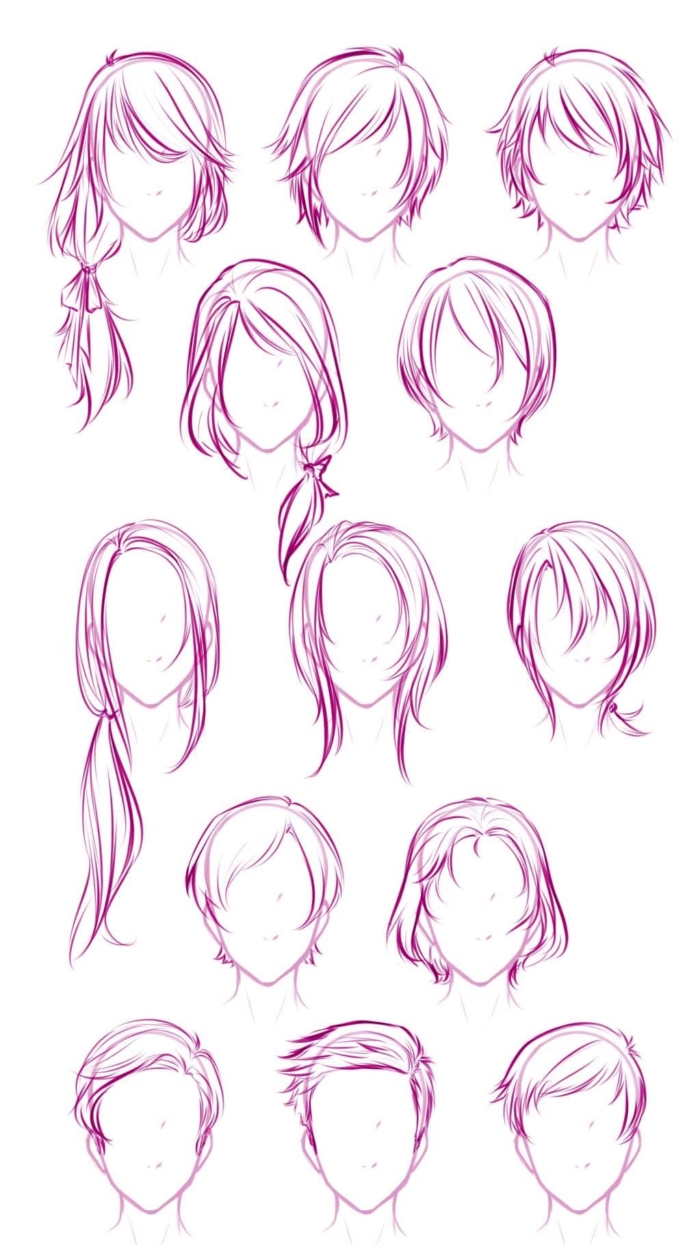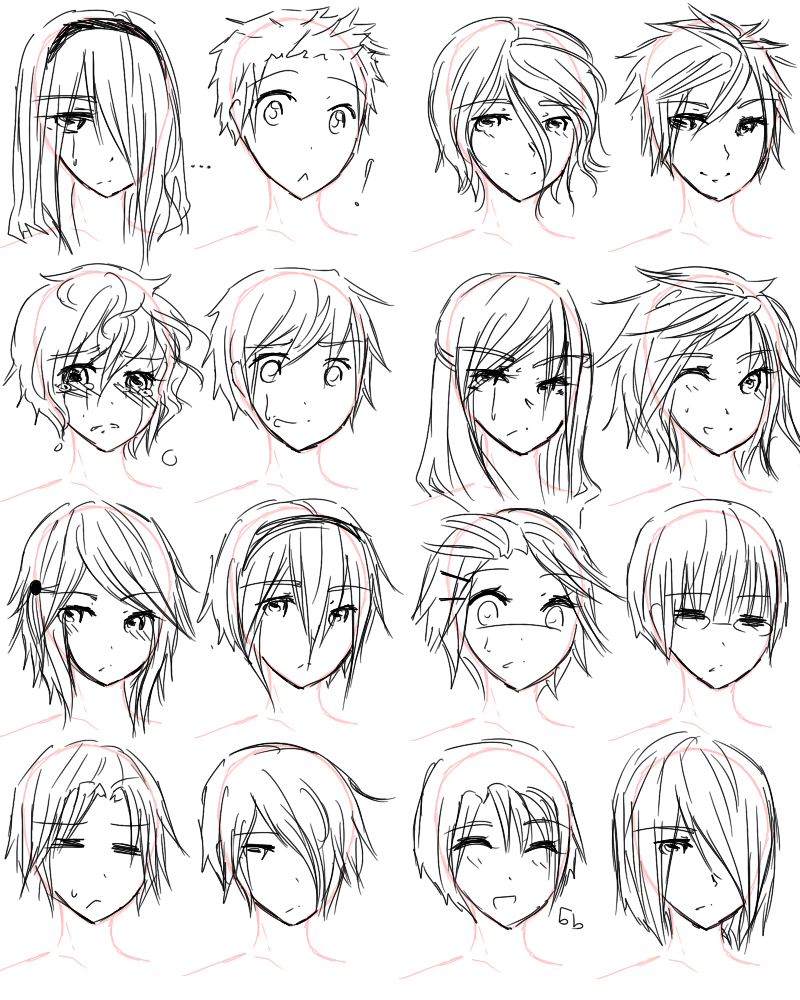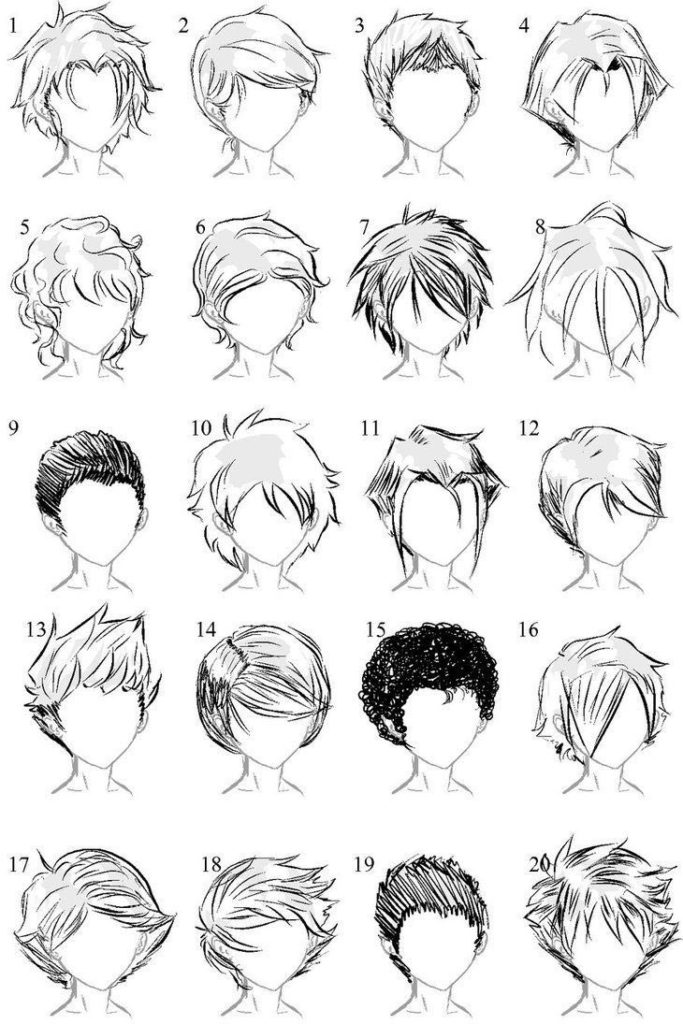AI-Generated Article
This content has been automatically generated using artificial intelligence technology. While we strive for accuracy, please verify important information independently.
Have you ever felt a little stuck when trying to draw hair? It’s something many artists, whether you're just starting out or have been creating for a while, find a bit tricky. Hair can seem like a big, complicated thing to get right on paper, with all its strands and how it moves. But honestly, getting good at hairstyle drawing can be a really fun and rewarding part of your art journey, too it's almost a kind of magic when it finally looks right.
This article is here to help you get a handle on drawing all sorts of hair. We'll look at how to draw hair from many different angles, and you’ll find some simple ways to learn the skills you need. We'll go over how to draw classic looks like ponytails and braids, and even how hair looks when it's blowing in the wind or moving underwater, which is quite interesting.
So, if you're keen to make your characters look more alive with amazing hair, or you just want to improve your drawing skills generally, you've come to the right spot. We're going to explore how to make hair look realistic and full of style, helping you capture its flow, its feel, and how much space it takes up effectively. You'll find plenty of ideas and steps to try out for yourself, that's for sure.
Table of Contents
- The Starting Point for Hairstyle Drawing
- Drawing Different Hair Looks
- Tips for Lifelike Hair in Your Art
- Beyond the Basics: Making Your Characters Shine
- Frequently Asked Questions About Hairstyle Drawing
The Starting Point for Hairstyle Drawing
When you begin drawing hair, it can feel like a lot to take in. You might wonder where to even start. The good news is, there are some basic things that can really help you get going. Thinking about hair as a shape or a mass first, rather than individual strands, is a very good first step, you know.
Understanding the Basics
To draw hair well, it helps to think about its structure. Hair isn't just a flat shape; it has depth and it comes out from the head. Imagine it as big sections or clumps, rather than trying to draw every single strand right away. This way of looking at it helps you build up the hair in a more natural fashion. For example, if you're drawing a character, you might think about the general shape of their hair first, like a big, soft cloud around their head, before you add any smaller details, which is quite useful.
Many people find hair one of the trickiest things to put down on paper, but this step-by-step way of thinking about it can really help you get to drawing hair that looks real in a short amount of time. It's about breaking down something that seems complex into simpler parts. You are, in a way, learning to see hair in a new light, focusing on the larger forms before moving to the smaller ones.
Capturing Flow and Movement
Hair rarely just sits still; it has a natural flow and movement to it. Think about how hair falls, how it might curl, or how it would look if a gentle breeze were blowing through it. Capturing this sense of movement is a big part of making your hair drawings look alive. You want to show that the hair isn't just painted on, but that it has its own weight and reacts to things around it, like gravity or wind, as a matter of fact.
To get this flow right, you can use long, curving lines in your sketches. These lines help guide the eye and show the direction the hair is taking. It's a bit like drawing water, where you show the current rather than every single drop. Learning how to capture this flow effectively is a key skill for drawing hair that feels real and dynamic, something many artists aim for.
Adding Texture and Volume
Hair comes in so many different textures: straight, wavy, curly, coily. Each type has its own unique look and feel, and showing that in your drawing makes a big difference. Volume is also important; it's about how much space the hair takes up and how full it looks. Some hairstyles are very flat, while others are big and bouncy, you know.
To add texture, you can vary your lines. For straight hair, long, smooth lines work well. For curly hair, you might use more curved or spiraling lines to show the individual curls. When it comes to volume, think about where the hair lifts away from the head. You can use shading to create the illusion of depth and fullness, making the hair seem to pop out from the page. Master these hair drawing techniques for results that are both real-looking and stylish, which is pretty cool.
Drawing Different Hair Looks
Once you have the basics down, you can start exploring all the many different ways hair can be styled. There are so many types of women's hairstyles to choose from, and while it's great to have so much variety, it can also be a little overwhelming. But don't worry, breaking them down into categories helps a lot.
Classic Styles: Ponytails, Braids, and Buns
Some hairstyles are just timeless, and learning to draw them is a great way to build your skills. Ponytails, for instance, seem simple, but getting the way the hair gathers and falls can be a fun challenge. Braids, with their interwoven strands, might look complex, but they can be broken down into repeatable patterns. Buns, whether neat or messy, also have their own distinct shapes and forms. I actually have tutorials on drawing ponytails, braids, and hair in a bun, so you can find plenty of guidance there.
These classic styles are fantastic for practicing how hair bunches together, how it twists, and how it holds its shape. They give you a solid foundation for understanding hair structure before you move on to more complicated looks. Many of you have asked for updated hair tutorials, and these foundational styles are often a big part of those requests, which is understandable.
Hair in Motion: Wind and Water Effects
Drawing hair that is moving, like in the wind or underwater, adds a whole new level of life to your art. Hair in the wind will often flow in a single direction, but it will also have individual strands that break away and flutter. Underwater hair, on the other hand, tends to spread out and float, almost like a soft cloud, reacting to the water's currents. I have tutorials on drawing hair in the wind and underwater, which can show you some specific techniques.
To capture these effects, you need to think about how the environment influences the hair. It's not just about drawing hair, but about drawing hair *reacting*. This helps tell a story with your art and makes your characters feel like they're truly part of their surroundings, which is something you really want to achieve.
Anime and Cartoon Hair Styles
Anime and cartoon hair often have a distinct look, usually simplified and stylized, but still very expressive. They might not follow all the rules of realistic hair, but they have their own rules for volume, spikes, and flow. There's a tutorial on how to draw anime and manga hair for female characters, with step-by-step instructions on drawing twelve different hairstyles, which is quite a lot to try.
When drawing these styles, the focus is often on strong, clear shapes and dynamic lines. You're trying to capture the essence of the hair, rather than every single detail. This approach can be really freeing and allows for a lot of creativity in how you design your characters' looks. Discover essential hair drawing references for character design, including anime and cartoon examples, shapes, and details, as they can be very helpful.
Kawaii Hair: Fun and Expressive
Kawaii, which means "cute" in Japanese, has its own special way of showing hair. Kawaii hairstyles are often rounder, softer, and have a playful feel. They might feature big bows, cute clips, or little pigtails that bounce. What makes a hairstyle look kawaii? It's often about exaggerating certain features to make them seem more adorable and charming, you know.
This post shows tips and tricks for drawing kawaii hairstyles, plus ways to adapt manga hairstyles to kawaii characters. It's about taking those fun, simplified shapes and adding a touch of cuteness. This style is great for characters that are meant to be sweet, innocent, or just generally charming, and it's a very popular look these days.
Tips for Lifelike Hair in Your Art
Making your hair drawings look truly lifelike takes a bit of practice and some clever tricks. It's not just about drawing lines; it's about making those lines work together to create something that feels real and has depth. These tips can help you step up your drawing skills in different ways, really.
Sketching Techniques for Beginners
If you're just starting out, keeping your initial sketches light and loose is a great idea. Don't press too hard with your pencil. Start with the big shapes of the hair first, almost like a helmet or a large mass, before you begin to add any smaller sections. This video shows a step-by-step tutorial on how to draw hair for beginners, and it really emphasizes starting simple.
Then, you can gradually add more detail, thinking about how the hair clumps together and where the light might hit it. I also go through some great tips to help you create different hairstyles for your portraits or your own characters. It's all about building up your drawing layer by layer, which is a pretty common approach in art.
Coloring Your Hair Drawings
Adding color to your hair drawings brings them to life even more. When coloring, think about the different tones within the hair. Hair isn't just one solid color; it has highlights where the light hits it, and shadows where it's darker. Using a range of shades for the same color can make the hair look much more dimensional and real, you know.
You can also think about how light bounces off hair. Shiny hair will have sharper, brighter highlights, while duller hair might have softer, more spread-out light areas. The tutorial "How to draw hairstyles | sketching & coloring tutorial natalia madej" has helped many people with this, with over 570,000 subscribers finding it useful. It's a great resource for seeing coloring in action.
Finding Great References
One of the best ways to improve your hairstyle drawing is to look at a lot of references. This means looking at real hair, pictures of hair, or even other artists' drawings. A large collection of men's and women's hairstyles for sketching by beginners and advanced artists can be a goldmine for ideas. You can find 100 hairstyle drawings for free, which is a fantastic resource.
If you're looking for girl hair drawing ideas and references, there are collections that will help you practice drawing hair specifically for female characters. Looking at different hair lengths, textures, and how they interact with faces can give you so many ideas. It's like having a library of hair at your fingertips, which is really helpful.
For more general art resources and inspiration, you might find useful information on a broad art resource website. It's always good to see what other artists are doing and how they approach different challenges, you know.
Practicing Different Angles
Hair looks different from every angle. A ponytail seen from the front will look different from one seen from the side or the back. Practicing how to draw hair from many angles is key to making your characters feel consistent and real in different poses. This helps you understand how hair wraps around the head and falls in space.
You can try drawing the same hairstyle from a few different viewpoints. This helps build your understanding of its three-dimensional form. It's a bit like learning to draw a box; once you can draw it from any angle, you can use it in any scene. This practice helps you learn all the necessary skills for drawing hairstyles at many angles, which is super important for character art.
Beyond the Basics: Making Your Characters Shine
Once you've got a good grasp on the fundamentals of hairstyle drawing, you can start thinking about how hair plays a bigger role in your overall art. It's not just about drawing hair; it's about how that hair helps define your characters and their world. You'll find the right new 'do for you, or rather, for your character, when you start thinking this way.
Hair for Portraits and Characters
Hair is a huge part of a character's identity. It can tell you a lot about their personality, their age, or even their background. When you're drawing portraits or creating your own characters, the hairstyle you choose can make a big impact on how they are seen. Think about how different hairstyles can change a face or convey a certain mood, you know.
You'll find plenty of hair ideas for different women's haircuts that are guaranteed to make your characters look stunning. From chic bobs to bold pixie cuts, these short hairstyles are trending in 2025, and they work on every texture from straight to coily. You can use these real-world trends as inspiration for your drawn characters, which is a fun way to keep your art fresh. Learn more about character design on our site, as hair plays a big part in it.
Choosing Hair to Fit Personality
Just like real people choose hairstyles that suit them, you can choose hair for your characters that complements their personality and lifestyle. Is your character adventurous? Maybe they have wild, flowing hair. Are they neat and tidy? Perhaps a sleek bun or a sharp bob would fit. This is where the creative choices really come in.
Have you considered wearing your hair differently, or do you have an idea for a fancy event? These questions, usually asked about real hair, can also apply to your characters. Exploring the best hairstyles to complement your character's personality and lifestyle makes them feel more real and thought-out. You might also enjoy our article on drawing faces, as hair frames the face and completes the character's look.
Frequently Asked Questions About Hairstyle Drawing
Here are some common questions people ask about drawing hair, with some straightforward answers to help you out.
How do you draw hair easily?
To draw hair easily, start by sketching the overall shape or mass of the hair first, rather than trying to draw individual strands. Think of it as a big, simple shape around the head. Then, you can add in the main flow lines and gradually build up smaller sections and details. Using light, loose lines at the beginning helps a lot, too it's almost like a rough draft.
What is the best way to draw realistic hair?
The best way to draw realistic hair involves understanding how light and shadow play on hair, and how hair clumps together. Focus on showing volume and texture by varying your lines and using shading to create depth. Look at plenty of real hair references to see how it naturally falls and moves. Don't forget to show highlights and shadows, as they make hair look much more real, you know.
How do you draw hair for beginners?
For beginners, a good way to start drawing hair is to find simple, step-by-step tutorials that break it down. Begin with basic shapes for the head and hair, then add the main direction of the hair's flow. Practice drawing common styles like ponytails or simple braids. Don't worry about perfection at first; just focus on getting the general idea down. Practice often, and use plenty of visual guides, which is very helpful.
🖼️ Related Images



Quick AI Summary
This AI-generated article covers Hairstyle Drawing: Easy Ways To Bring Hair To Life In Your Art with comprehensive insights and detailed analysis. The content is designed to provide valuable information while maintaining readability and engagement.
Alexys Gottlieb
✍️ Article Author
👨💻 Alexys Gottlieb is a passionate writer and content creator who specializes in creating engaging and informative articles. With expertise in various topics, they bring valuable insights and practical knowledge to every piece of content.
📬 Follow Alexys Gottlieb
Stay updated with the latest articles and insights